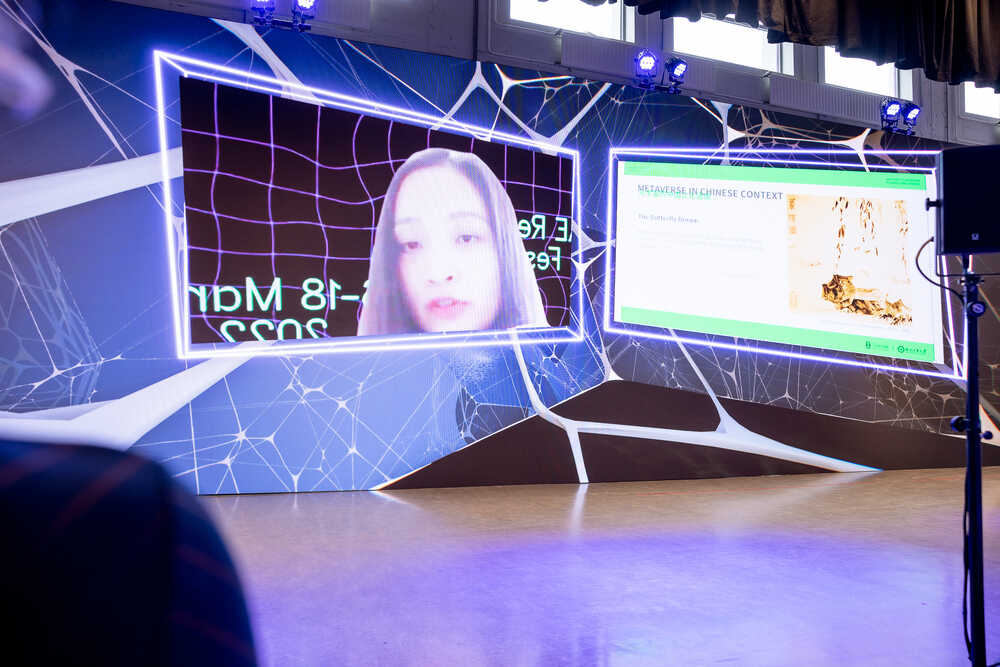Researching Research
The first edition of the DAE Research Festival took place from 16-18 March. Celebrating 75 years of the Academy, the event was co-organised by the Master departments and the Professorships of DAE. Speakers from inside and outside the school gathered offline and online to discuss their diverse research practices and the role of design as a producer of knowledge(s).
The three-day event began with a minute of silence, led by Director of Education, Research and Organisation Raf de Keninck, standing in solidarity with Ukraine and acknowledging the privilege of being able to gather together.
Then Creative Director Joseph Grima led a panel discussion with the MA Heads and the DAE Professors on how research within the Academy’s walls might differ from the more traditionally understood academic canon of research. “Do we simply take all the academic prescriptions that go into the certification process and follow them? Or do we put this question on the stage and think collectively about what we can offer to the field of research?” asked Grima.
The need to question the meaning of ‘to research’ resonated with the panellists. Marina Otero Verzier, Director of Research at Het Nieuwe Instituut and Head of DAE’s Social Design MA, called on designers to search for the not-yet-known, the things we do not know we do not know, and to let curiosity lead the way. Saskia van Stein, independent curator and Head of the Critical Inquiry Lab MA, added that within this search, designers also need to see through their environments, social legacies and material realities, and our own cultural biases.
The opening discussion concluded with the notion of research through design: “connecting the brains with the hearts and the hands”, as van Stein put it. One of the intentions behind the festival was to capture and showcase the different types of research that the Academy seeks to foster. DAE values design itself as an immersive form of research that wholly speaks to the senses. This was evident in many of the projects and conversations presented throughout the day.

Anastasia Kubrak, alumni from BA Man & Communication, tutor at DAE and PhD candidate at the Critical Media Lab / FHNW Academy of Art and Design, discussed the transition between being a generalist and a specialist, as well as how the visual strategies she embodied working as a designer over the years now aid her research into lithium bathing and mining.
Rebecca Schedler, a recent graduate from MA Social Design, described her investigation into the values that we place on material and social relations. Her project Symbiopunk, a Bioreactor compost system, converts human faeces into fertile hummus. Situating herself at the intersection between design and science has allowed her to function outside institutionalised systems, where radical solutions to our ecological crisis can occur.
From independent research to researching collectively, the first day was rounded up with “Missing Words” from the new head of Contextual Design Afaina de Jong, who posed the question: “To design otherwise, what words do we need?”. The words de Jong seemed to be pointing at are the shared spaces where meanings can be collectively deconstructed and reconstructed - much like the research festival itself. The feminist architecture collective Claiming*Spaces shared their experience in utilising the resources available within educational institutions to carve out intersectional perspectives within the rigid architectural discourse, while the current students of Contextual Design introduced their self-initiated internal magazine, an online archive for the cohort to share and make accessible their past, present, and future research and ideas.

The second and third days of the festival were titled “Unfolding Spaces”. Hosted by the DAE Professorships, the programme shifted from discussing research itself to focusing on the digital spaces and lived realities research exists in. The hybrid format of the festival also allowed participation from those who could not be at the Academy physically, including international practitioners and pioneers in the field.
Joining from London were students of the Interactive Architecture Lab, based at the Bartlett School of Architecture at University College London. Led by their tutor Dr Fiona Zisch, they discussed their critical perspectives on the lack of representation in the development of digital spaces. They proposed their project Xalon as a counterpoint. Inspired by Gertrude Stein’s Parisian salons and imagined as a comment-building XR experience, Xalon allows members’ ‘safe spaces’ to be uploaded and shared in the malleable virtual environment, stitching the physical and the digital into a hybrid ecology.
Xalon was not the only project presented at the festival that deals with digital space as a commons. During a workshop with Benjamin Unterluggauer, the designer introduced an online tool, HYPER, that moves beyond the familiar aesthetic of the World Wide Web into a three-dimensional space where the inter-linked-ness of information is visible and changeable. Participants were invited to bring in their topic of interest and begin populating their own virtual research space.
Fundamentally, the DAE Research Festival was a celebratory gathering of minds and bodies. Research requires inquiries beyond one’s current knowledge horizons, and, perhaps more than anything, the opportunity to go beyond oneself and learn from one another is what many of us have longed for during the past two years of restrictions, isolation and introspection. To share time and space has become a privilege. This first iteration of the festival offered a glimpse of hope.
All three days of content from the DAE Research Festival can be found be watched on Vimeo

